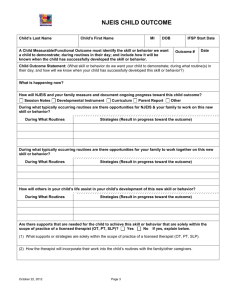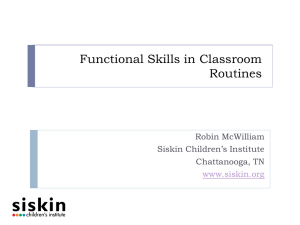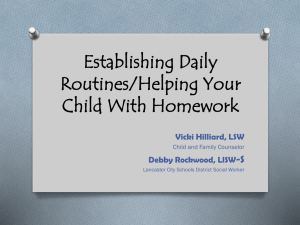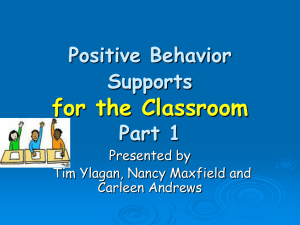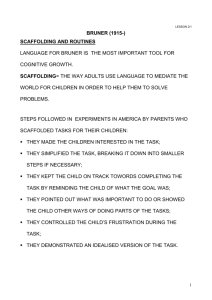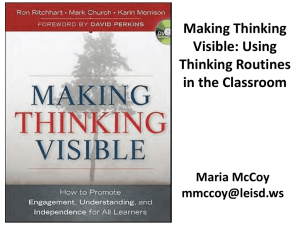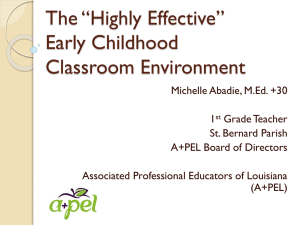Functional Behavior Assessment Activity: Annie`s Story
advertisement
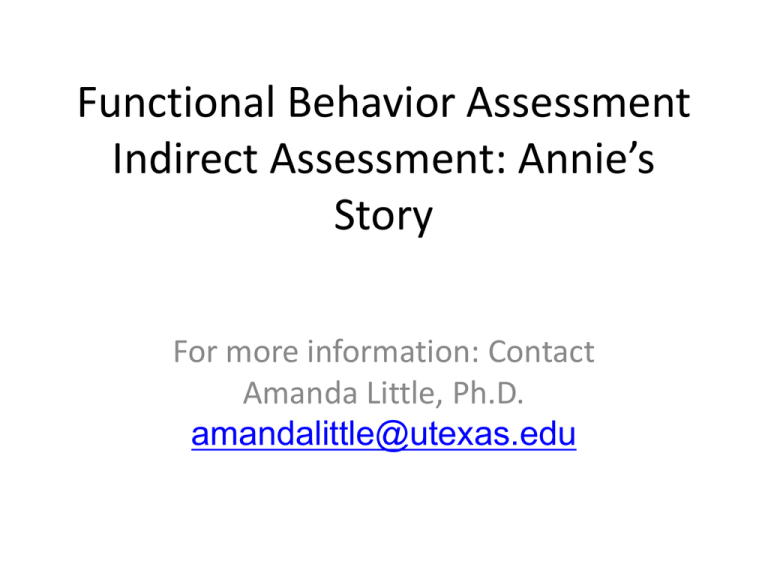
Functional Behavior Assessment Indirect Assessment: Annie’s Story For more information: Contact Amanda Little, Ph.D. amandalittle@utexas.edu Annie’s Story • Annie is a three-year-old diagnosed with autism spectrum disorder. She loves playing on the computer, music, ocean animals and swimming. She has many strengths, which were identified at her PCP meeting and include: – – – – – – Adorable Smart Good memory Happy Strong-willed Energetic Annie’s Story • Annie’s family has difficulty taking her into the community due to her exhibiting challenging behaviors, being “impatient”, running away or grabbing items that aren’t hers. She has difficulty waiting in line. • Let’s listen to what her mom has to say. (12 minutes) • What challenging behaviors might you look for? Functional Behavior Assessment • Indirect Measures – Informal Interview with Mother – Motivation Assessment Scale – The TOOL • Direct Measures – Partial Interval Data Recording during Brushing Teeth Routine – Family Data Collection Sheet What are Routines? • Routines are daily, habitual activities that occur • Routines allow teaching to occur within familiar activities and following simple and multi-step instructions • Patterns and routines are part of bigger routines • When we are out of our routines we may become irritable and crave our normal routines again • Routines may be problematic if we can not vary from them—e.g. some children with autism • Bedtime routines, for example those involving a bath, book, and “getting tucked in”, provide children with security • Help children be more independent and manage their behavior Examples of Routines • • • • • • • Mealtime Bedtime Morning routine Schedule of the day Bathroom routine What are your routines? What routines might you intervene on with Annie? Baseline • Baseline—brushing teeth routine (5 minutes) • Start: Instruction to brush teeth (e.g., “Time to brush teeth”) • End: routine ends after spitting and/or putting toothbrush away or mom saying “all done” • Possible challenging behavior definitions: – Elopement—leaving the sink area beyond 2 feet or attempt stopped by mom or not being in the bathroom unless it is a choice – noncompliance—not following an instruction within 2 seconds of it being given, taking toothbrush out of mouth for at least 2 seconds which may include saying “no” or turning her head – Delaying—not engaging in the behavior as instructed or implied (e.g., steps of the brushing teeth routine) for at least 2 seconds. This includes engaging in or asking for other items or activities, engaging in conversation, etc.) Data Collection Activity • Create a data collection sheet that the family will use to provide you with data on challenging behaviors • Discuss how you would teach the family or other team members how/when/where to take the data Next Step: Hypothesis Statement and Competing Behavior Diagram

